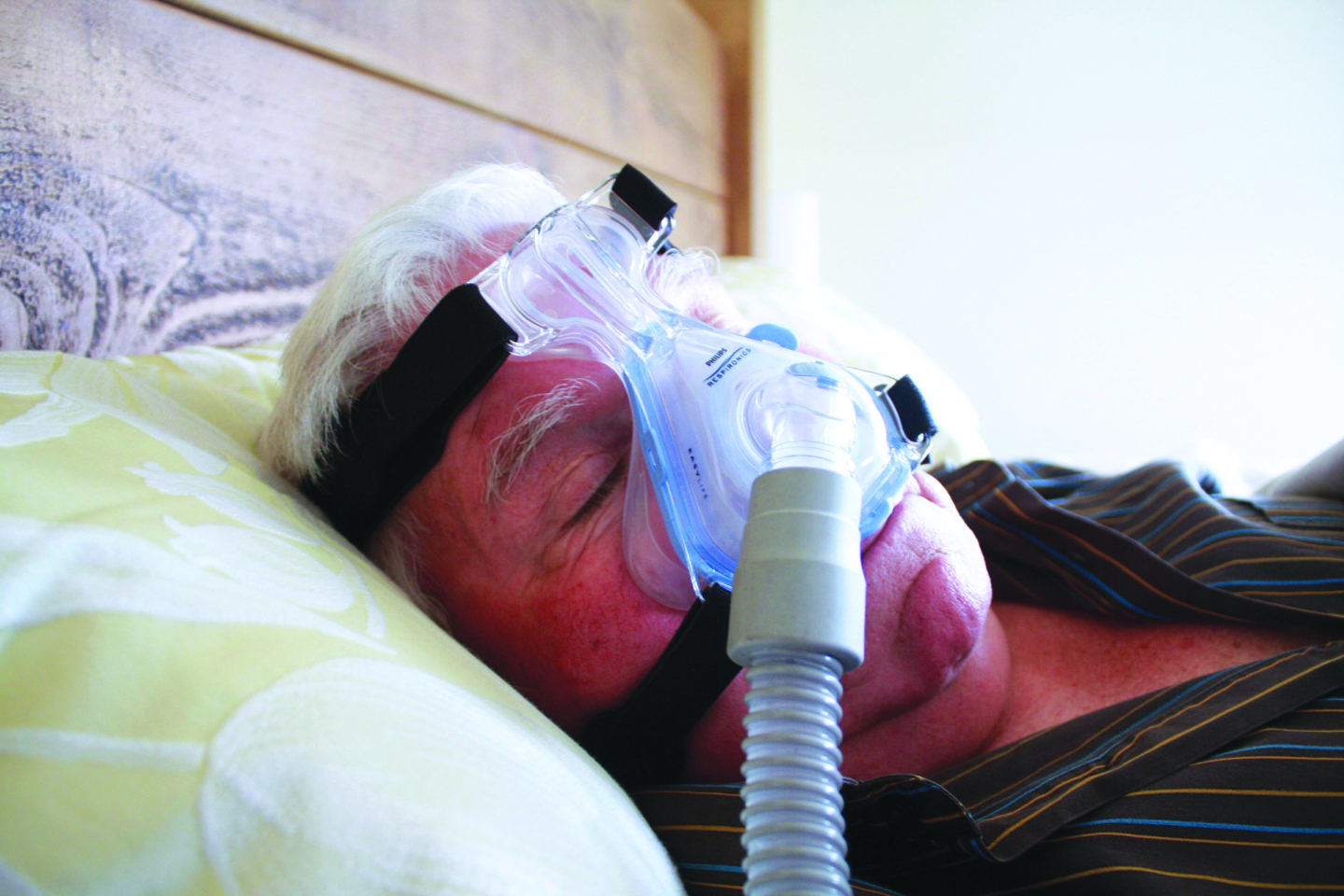Select Sleep Apnoea Service
The CPAP machine
The Continuous Positive Airway Pressure (CPAP) machine consists of a pump that sucks air from the room through a filter and blows it out at a pre-determined pressure. The pressure varies according to the individual’s needs and will be prescribed specifically for you by your consultant.
Some people find it harder to get to sleep when the CPAP machine is blowing pressurised air. For this reason, some machines have the option to build up pressure over a period of time while you sleep.
What to expect when using Continuous Positive Airway Pressure (CPAP) at home
Position your CPAP machine and tubing to suit your preferred sleeping position. Some people prefer to bring the tubing over the top of the headboard whilst others run it over their shoulder. You can select whichever is the more comfortable for you.
When using your nasal CPAP mask for the first time, you will notice an unusual sense of pressure when breathing. It is normal to feel some resistance to breathing out as you are breathing out against the incoming airflow.
It is better to keep your mouth closed when wearing the CPAP mask. If you open your mouth, air will leak out and this may feel uncomfortable and restrictive.
If you wake in the night and feel uncomfortable with the pressure of the airflow, switch off the machine and remove the facemask for a few minutes. When you replace the mask, make sure it is comfortable before restarting the CPAP machine and breathe slowly with your mouth closed.
Common nasal problems
Occasionally, the CPAP treatment can irritate the nasal lining, which results in sneezing and a runny nose, similar to hayfever. This may settle down on its own, but if it does not then it would be wise to consult your GP or respiratory specialist.
Some people may experience a continuing dryness of the nose and throat, in which case it may be helpful to use a humidification circuit with the CPAP machine.
If your nose becomes blocked during the night, then it will be difficult to use the CPAP system. If you have a cold, consult your GP or respiratory specialist if the problem persists and they will decide whether treatment should be temporarily stopped.
Cleaning
Ensure that you clean and wash your masks and tubing in accordance with the manufacturer’s instructions.
Masks
CPAP masks are made of soft flexible, cushioned material and should fit snugly around the nose. There are several types of mask available with varying designs, but they all share a number of common features.
The nasal mask
The standard CPAP mask fits over the nose, leaving the mouth free. A good seal around the nose is important so there are no leaks of air.
The full face mask
Full face CPAP masks cover the nose and mouth. They are usually recommended if you have problems with air leaking from your mouth or if you tend to breathe through your mouth generally. A good seal and comfortable fit is important. Small leaks around the mask, as long as they are not into the eyes, are acceptable. The masks are made of soft, flexible, cushioned material that fit snugly on the face. There are various sizes and styles available. Please contact us on 0800 121 4524 for advice.
The headgear
The headgear is provided to keep the CPAP mask in position while you are asleep. It may consist of thin straps or a full cap to be worn on the head.
The straps are attached loosely to the CPAP mask before positioning over the nose. Once the mask is positioned, the straps can be adjusted so that the bottom straps are below the ears and the top centre strap passes over the top centre of your head.
Once the CPAP machine is turned on, the straps can be adjusted until a comfortable fit is achieved without any air leaks from the mask. The headgear should not be over-tightened. You may otherwise experience discomfort from a tightly-fitting mask.
To remove the CPAP mask, release the clip and pull it up and over your head. Alternatively, release one or both of the bottom straps and remove the headgear. You should not need to adjust the headpiece again until it is taken to pieces for cleaning purposes.


